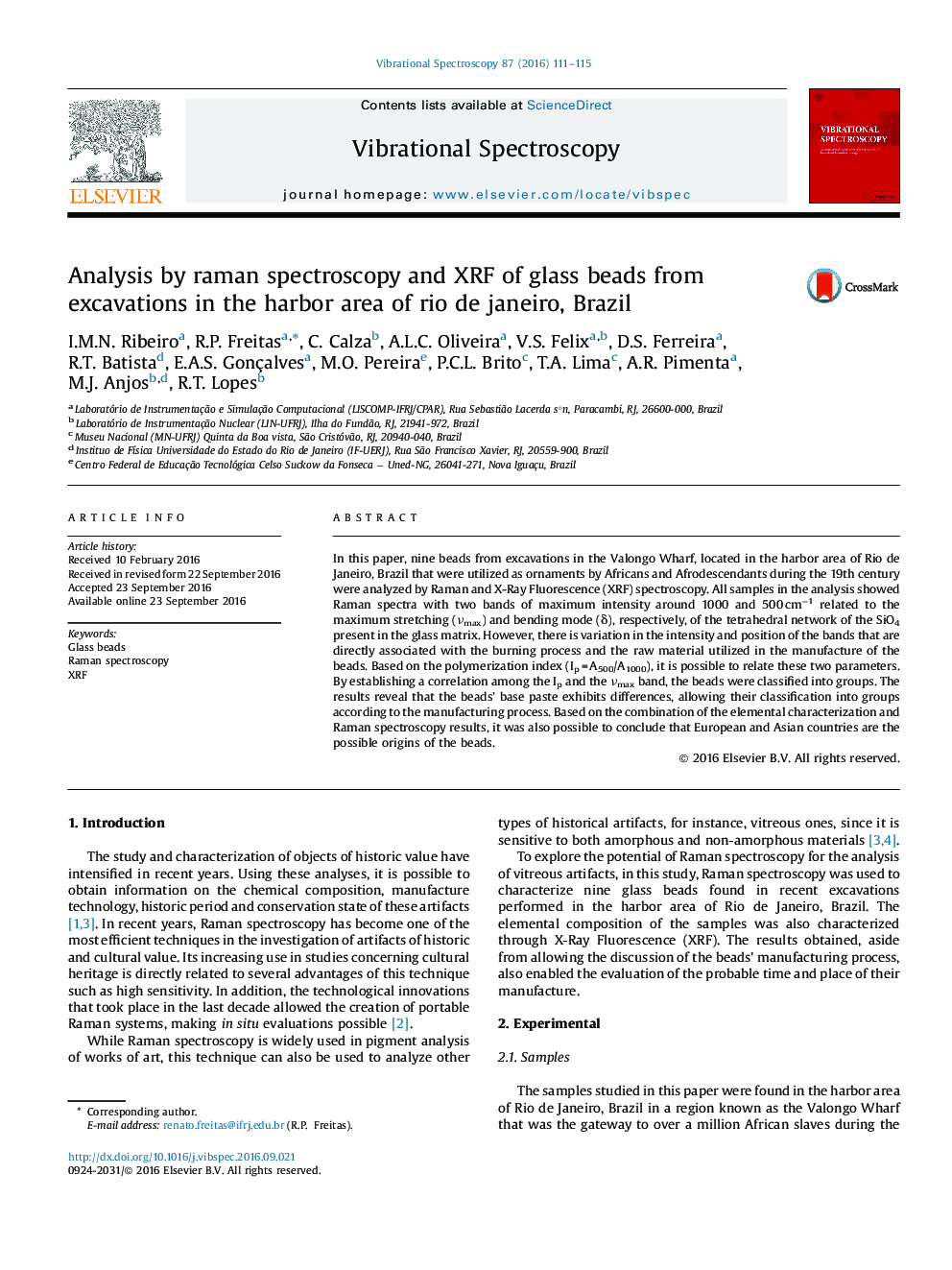| Article ID | Journal | Published Year | Pages | File Type |
|---|---|---|---|---|
| 7691012 | Vibrational Spectroscopy | 2016 | 5 Pages |
Abstract
In this paper, nine beads from excavations in the Valongo Wharf, located in the harbor area of Rio de Janeiro, Brazil that were utilized as ornaments by Africans and Afrodescendants during the 19th century were analyzed by Raman and X-Ray Fluorescence (XRF) spectroscopy. All samples in the analysis showed Raman spectra with two bands of maximum intensity around 1000 and 500 cmâ1 related to the maximum stretching (νmax) and bending mode (δ), respectively, of the tetrahedral network of the SiO4 present in the glass matrix. However, there is variation in the intensity and position of the bands that are directly associated with the burning process and the raw material utilized in the manufacture of the beads. Based on the polymerization index (Ip = A500/A1000), it is possible to relate these two parameters. By establishing a correlation among the Ip and the νmax band, the beads were classified into groups. The results reveal that the beads' base paste exhibits differences, allowing their classification into groups according to the manufacturing process. Based on the combination of the elemental characterization and Raman spectroscopy results, it was also possible to conclude that European and Asian countries are the possible origins of the beads.
Keywords
Related Topics
Physical Sciences and Engineering
Chemistry
Analytical Chemistry
Authors
I.M.N. Ribeiro, R.P. Freitas, C. Calza, A.L.C. Oliveira, V.S. Felix, D.S. Ferreira, R.T. Batista, E.A.S. Gonçalves, M.O. Pereira, P.C.L. Brito, T.A. Lima, A.R. Pimenta, M.J. Anjos, R.T. Lopes,
